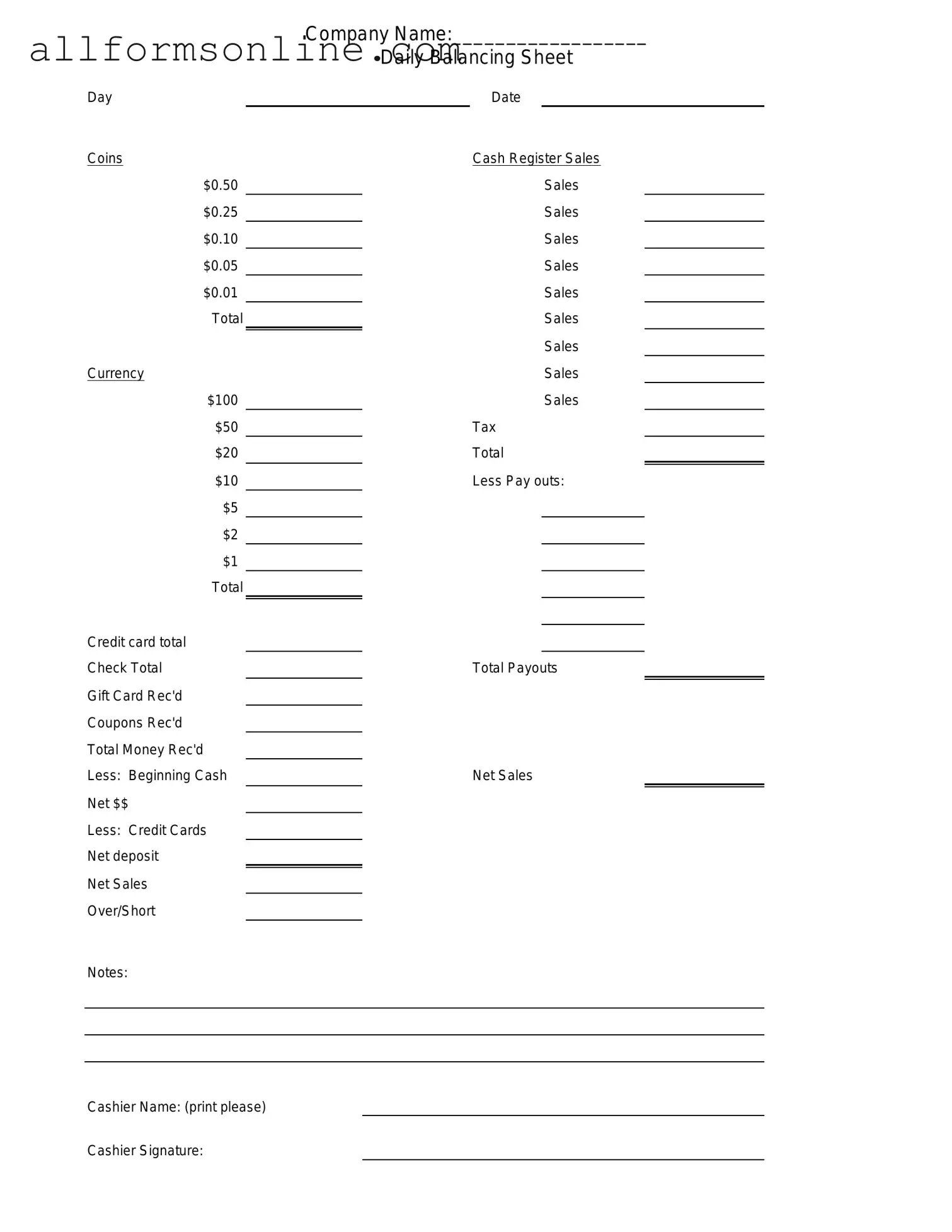What is a Cash Drawer Count Sheet?
A Cash Drawer Count Sheet is a document used by businesses to track the amount of cash in a cash drawer at the end of a shift or business day. It helps ensure that the cash on hand matches the sales recorded during that period. This sheet is essential for maintaining accurate financial records and preventing discrepancies.
Why is it important to use a Cash Drawer Count Sheet?
Using a Cash Drawer Count Sheet is crucial for several reasons. First, it promotes accountability by providing a clear record of cash transactions. Second, it helps identify any cash shortages or overages, which can prevent theft or errors. Lastly, it supports accurate financial reporting, which is vital for business operations and tax purposes.
How do I fill out a Cash Drawer Count Sheet?
To fill out a Cash Drawer Count Sheet, start by entering the date and the name of the person responsible for the cash drawer. Next, count the cash in the drawer, including bills and coins, and record the amounts in the designated sections. Finally, total the amounts and compare them to the expected cash based on sales records. Ensure that you sign and date the sheet for verification.
How often should I complete a Cash Drawer Count Sheet?
It is recommended to complete a Cash Drawer Count Sheet at the end of each shift or business day. Regular counting helps catch discrepancies early and keeps financial records accurate. Some businesses may also choose to do random counts throughout the day to ensure ongoing accountability.
What should I do if there is a discrepancy in the cash count?
If you find a discrepancy in the cash count, first double-check your calculations and the sales records. If the discrepancy persists, investigate potential causes, such as errors in transactions or possible theft. Document the findings on the Cash Drawer Count Sheet and discuss the issue with a manager or supervisor to determine the next steps.
